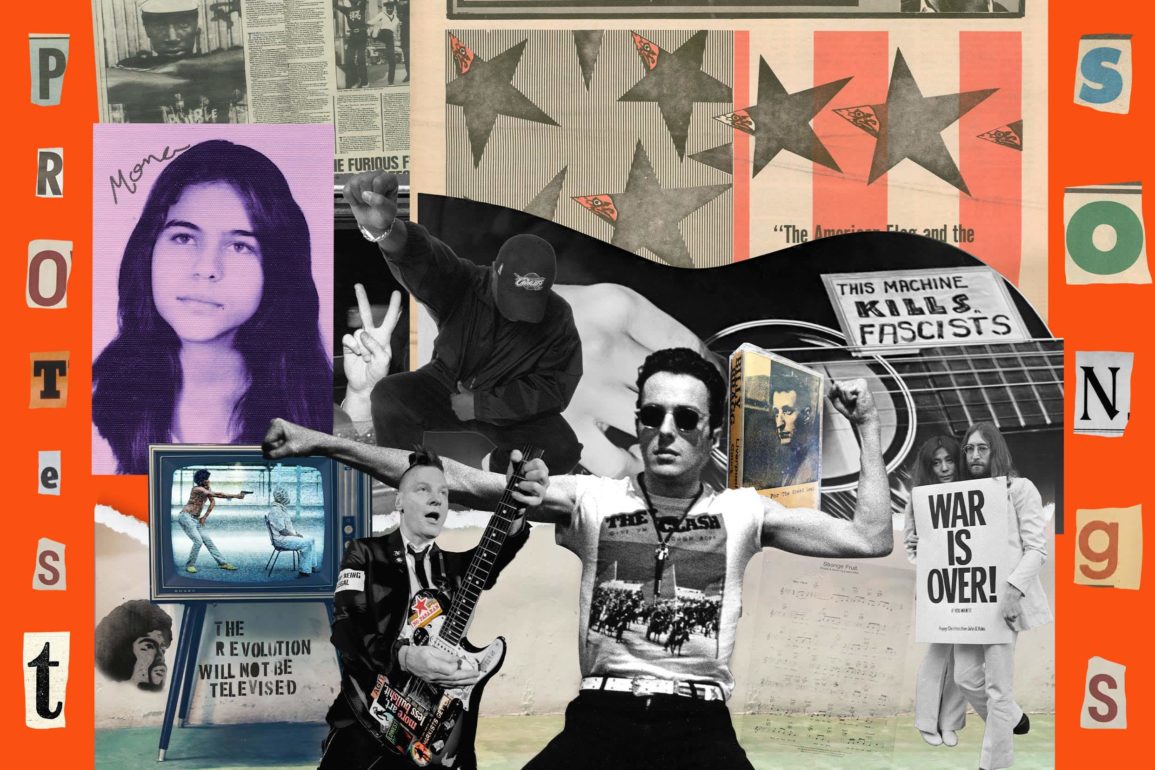In 1985, I was a regular Canadian teen. My 16 years on earth had been fairly normal and aside from losing my father 10 years earlier, my life was what most would consider typical and non-eventful. I went to school, came home to a loving family, I was learning to drive, I flirted with girls and played guitar in a band—life was super fantastical. One of my after school rituals was not doing homework, but sitting down in front of the television every day at 4pm to watch Toronto Rocks, a local music video show hosted by the late John Majhor. For one hour each day, I soaked in pop culture via this new music medium and loved every second. Sometime in autumn of 1985, an unknown Canadian singer named Doug Cameron appeared on the screen with his video for “Mona with the Children.” The song told the story of Mona Mahmudnizhad, a Persian Bahá’í girl, who together with nine other Bahá’í women, was sentenced to death in Iran, because of her membership in the Bahá’í Faith. Mona was 16 when she was hanged. The song resonated with me (to this day it is an earworm that randomly pops into my head). I lived in a country where my biggest worries were perfecting the riff to Crazy Train and passing my driver’s exam in November, while 10,000 km away, Mona was executed because her religious beliefs didn’t jive with those of her government. That’s the power of the protest song.
It’s safe to assume that the first protest song and the first injustice were created on the same day. I don’t have proof, but it’s possible that after eating the forbidden fruit and being accused of bringing sin to the world, rather than being heralded as the first independent woman, Eve sang a song protesting her character assassination; or the fact that one day church leaders would preach she was made as an afterthought and therefore not an equal to her partner—think Aretha Franklin’s “Respect”. (BTW, if you think Adam is superior because he was created first, don’t forget that God made animals before man… let that sink in).
What did Eve’s song sound like? Who knows. Recorded music wouldn’t appear until the 1930s and prior to that, most protest songs had simple, easy-to-learn call and response lyrics sung to the tune of songs people already knew. With radios and record players as the new source for music, the oral tradition of song was brought into our homes via the pop music of the day.
WIth music being transmitted into homes electronically, songs evolved. No longer were they simply chants or a call to arms—tunes and lyrics became more complex and this new music was art. Enter Billie Holiday’s 1939 song “Strange Fruit.” It’s a dark, bitter poem expressing the horrors of lynching, using fruit as a metaphor for the hanged black bodies. “Southern trees bear a strange fruit, Blood on the leaves and blood at the root, Black body swinging in the Southern breeze, Strange fruit hanging from the poplar trees…” It’s a song of revulsion.
There is no distinct style associated with the protest song. They come in every style and cover a wide-range of social issues. What they do share, are bonding elements—focus on the tvulnerable, fearlessness to speak up against injustice, and a desire to invoke political or social change… and if done right, a great protest song will take on the current issues, transcend eras and speak to future generations.
“Give Peace a Chance” is one of those songs. Written and recorded in 1969 during John and Yoko’s Bed-in for Peace at the Queen Elizabeth Hotel in Montreal, the song is a minimalist, catchy, anti-war anthem that sparked from an interview. When asked what he was trying to achieve with the Bed-in, Lennon answered, “give peace a chance.” The man knew a great slogan when he heard one [“War is over if you Want it”, “All you Need is Love”], so he brought in some mics, a 4-track recorder and had everyone in the room sing the chorus—“All we are saying, is give peace a chance.”Within months, protesters were outside the White House chanting the chorus, in protest of Vietnam War. Fast forward 53 years—on March 4 and 8 of this year, 350 radio stations broadcast Lennon’s song as a call for peace against the Russian invasion of Ukraine—one message transcending areas.
Some artists have built entire careers standing up to the man—The Lowest of the Low’s Ron Hawkins singing stories of revolution; Billy Bragg strumming his jangly guitar for political change; and Public Enemy using rhyme to shine a spotlight on American racism.
Then there’s “The only band that matters.” The band that preferred being referred to as a “news-giving group” rather than a rock and roll group; the band whose leader, lyricist and spokesman, Joe Strummer once said, “The news is news, right? So it’s not boring. I mean, it’s what’s happening now, you know. We like to plug into what’s happening now;” the band who had genuine concern for working people and those who were oppressed. Almost every song written by The Clash can be considered a form of protest (or at very least socially conscious), shining their spotlight on a wide array of issues—the dangers of homegrown fascism [“English Civil War”], unemployment [“Career Opportunities”], U.S. involvement in the Vietnam War [“Charlie don’t surf], climate change [“London Calling”], and police brutality [“Know Your Rights”]. Often one song tackled a variety of issues—”Straight to Hell” speaks to factory workers losing their jobs, the alienation of immigrants, and the children fathered, then abandoned by US soldiers in Vietnam. Appropriately, 26 years later, M.I.A. sampled the song when she wrote, “Paper Planes.’ Drawing from personal experience, the song speaks to how immigrants and refugees from war-torn countries would adapt to living in a super-Capitalist country like the US. Mix in gunshots and cash register sounds to represent how these people are perceived by their hosts, and you have a very catchy protest song.
Some protest songs aren’t as easy to identify as others but before you know it, you’re stopped at a red light, screaming “I’m just a girl” to anyone within earshot… Yes, No Doubt’s 1995 sarcastic hit is all about gender equality. Others are totally misunderstood. If you only listen to the cheerful chorus of Bruce Springsteen’s “Born in the U.S.A.”, you can be forgiven for thinking the song is a pro-America anthem, which is why politicians from Ronald Reagan to Donald Trump have tried to use it during election campaigns, totally missing the message of how the U.S. had neglected Vietnam war veterans. “This Is England” from the Clash (again), had the same effect—a big patriotic chorus, but pay attention and you’ll hear an attack of Margaret Thatcher’s England; and possibly the most misunderstood is Woody Guthrie’s “This Land is Your Land” which is often thought to be a patriotic song but in reality was a critique of Irving Berlin’s “God Bless America.”
Rich, preachy musicians can be seen as a bit ingenue…some figure Bono and his buddies should simply drain their bank accounts and throw money at the world’s problems to make them go away. Yes, I believe the rich have a social obligation to help the less fortunate, but I think there’s something to be said for passionate people spreading awareness of the injustices that happen globally. Through them, I learned about Ethiopian famine from Bob Geldof, Tibetan independence from The Beastie Boys, and inner city poverty from Grandmaster Flash.
The use of protest in music has a rich history that spans across all genres. Some of the greatest music of the last century spoke out against injustice, oppression, and war.
Often, during times of conflict musicians emerge as the most outspoken critics, speaking out against injustice, oppression, and war… and creating some of history’s greatest songs along the way. Recently, the murder of George Floyd sparked a flurry of music [some new and some old] protesting racial injustice and police brutality—Kendrick Lamar’s “Alright”, “This is America” by Childish Gambino and “Fuck Tha Police” by N.W.A. seemed as relevant in 2020 as it was in 1988. Less than a month after the murder, Anderson .Paak reacted with “Lockdown.” Released on Juneteenth, a U.S. holiday commemorating the liberation of African-Americans slaves, he details his experience at the Black Lives Matter protests in Los Angeles.
The #MeToo movement caused artists to hit hard with songs like Stella Donnelly’s “Boys Will Be Boys,” Soccer Mommy’s “Your Dog” and Amanda Palmer & Jasmine Power got straight to the point with “Mr. Weinstein Will See You Now.” As I write this, Russia is bombing Kyiv and the Ukrainian people are using Twisted Sister’s “We’re not going to take it” as their anthem of rebellion. Not exactly a protest song, but it’s giving strength to their fight—music is powerful.
Two weeks before writing this article, the American Senate passed a bill to make lynching a federal hate crime. You read that correctly, after some 200 bills that have been introduced over the past century, the Senate [finally] unanimously agreed that hanging black people—an act whose sole purpose is to spread fear in order to maintain white hierarchy—is wrong. God bless America. The fact that most protest songs are still relevant decades after they’re written is a sad commentary on the state of society.
I had always been drawn to angsty music—The Clash, U2, John was my favourite Beatle—but until Mona with the Children, I’m not sure I was paying attention. That one song made me go back into my catalogue and listen. Listen to Joe Strummer’s call to action in “White Riot” when he expressed that young white kids should be just as outraged at their oppressors as the blacks kids were, and they should demonstrate through protest; listen to Bono be the voice for the dead victims of IRA bombings in Northern Ireland; listen to John Lennon tell the world to simply, “Give Peace a Chance.”
LISTEN TO OUR SELECTION OF PROTEST SONGS ON SPOTIFY.
WORDS & ILLUSTRATION: DAVID GANHÃO


